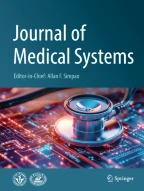Abstract
Mathematical modeling and simulation with medical applications has gained much interest in the last few years, mainly due to the widespread availability of low-cost technology and computational power. This paper presents an integrated platform for the in-silico simulation of trauma incidents, based on a suite of interacting mathematical models. The models cover the generation of a scenario for an incident, a model of physiological evolution of the affected individuals, including the possible effect of the treatment, and a model of evolution in time of the required medical resources. The problem of optimal resource allocation is also investigated. Model parameters have been identified according to the expertise of medical doctors and by reviewing some related literature. The models have been implemented and exposed as web services, while some software clients have been built for the purpose of testing. Due to its extendability, our integrated platform highlights the potential of model-based simulation in different health-related fields, such as emergency medicine and personal health systems. Modifications of the models are already being used in the context of two funded projects, aiming at evaluating the response of health systems to major incidents with and without model-based decision support.







Similar content being viewed by others
References
Stratified, personalised or P4, medicine: a new direction for placing the patient at the centre of healthcare and health education. Technical report, Academy of Medical Sciences (2015)
Hamburg, M. A., and Collins, F. S., The path to personalized medicine. N. Engl. J. Med. (NEJM) 363: 301–304, 2010.
Janssens, A. C. J., and van Duijn, C. M., Genome-based prediction of common diseases: advances and prospects. Hum. Mol. Genet. 17.R2:R166–R173, 2008.
Clapworthy, G., Kohl, P., Gregerson, H., Thomas, S., Viceconti, M., Hose, D., Pinney, D., Fenner, J., McCormack, K., Lawford, P., Van Sint Jan, S., Waters, S., Coveney, P., Digital human modelling: a global vision and a european perspective, in digital human modelling: a global vision and a european perspective, pp. 549–558. Berlin: Springer, 2007.
Chambers, R. B., The role of mathematical modeling in medical research: research without patients?. The Ochsner Journal 2(4):218–223, 2000.
Chalfin, D. B., Decision analysis in critical care medicine. Crit. Care Clin. 15:647–661, 1999.
Tom, E., and Schulman, K. A., Mathematical models in decision analysis. Infect. Control Hosp. Epidemiol. 18:65–73, 1997.
Neal, M. L., and Kerckhoffs, R., Current progress in patient-specific modeling. Brief. Bioinform. 11(1): 111–126, 2010.
Bouamra, O., and Lesko, M. M., Outcome prediction modelling for trauma patients: a German perspective. Crit. Care 18(5):616, 2014.
Hill, M.: Disaster medicine: using modeling and simulation to determine medical requirements for responding to natural and man-made disasters, no. NHRC-10-38 NAVAL HEALTH RESEARCH CENTER SAN DIEGO CA (2010)
Panunzi, S., Palumbo, P., De Gaetano, A., A discrete single delay model for the intra-venous glucose tolerance test. Theor. Biol. Med. Model. 4(1):35, 2007.
Shopov, M., Grisha, S., Galidia, P.: Architectural models for realization of Web-based Personal Health Systems. In: Proceedings of the International Conference on Computer Systems and Technologies and Workshop for PhD Students in Computing, ACM (2009)
Haux, R., Howe, J., Marschollek, M., Plischke, M., Wolf, K. H., Health-enabling technologies for pervasive health care: on services and ICT architecture paradigms. Inform. Health Soc. Care 33.2:77–89, 2008.
Kopetz, H., Internet of things, real-time systems,307–323, 2011.
Hick, J. L., Barbera, J. A., Kelen, G. D., Refining surge capacity: conventional, contingency, and crisis capacity. Disaster Med. Public Health Prep. 3.S1:S59–S67, 2009.
Pacciani, E., Borri, A., Soave, P. M., Gui, D., Magalini, S., Panunzi, S., Gaz, C. R., Gaudio, P., Malizia, A., De Gaetano, A.: Modelling and simulation for Major Incidents. In: 9th International Conference on Pervasive Computing Technologies for Healthcare (PervasiveHealth), pp. 297–303 (2015)
Goebel, R., Sanfelice, R. G., Teel, A., Hybrid dynamical systems. IEEE Control. Syst. Mag. 29.2:28–93, 2009.
Baker, S. P., o’Neill, B., Haddon Jr., W., Long, W. B., The injury severity score: a method for describing patients with multiple injuries and evaluating emergency care. J. Trauma Acute Care Surg. 14.3:187–196, 1974.
Kool, D. R., and Blickman, J. G., Advanced Trauma Life Support. ABCDE from a radiological point of view. Emerg. Radiol. 14.3:135–141, 2007.
Cassandras, C. G., and Lygeros, J. (eds.): Stochastic hybrid systems, Vol. 24. CRC Press (2006)
Extensible Markup Language (XML) 1.0 (Fifth Edition), World Wide Web Consortium, 2008-11-26. Retrieved 2012-11-23
SOAP Specifications, W3C. Retrieved 2014-03-29
Gosling, J., Joy, B., Steele, G., Bracha, G., Buckley, A.: The Java Language Specification (2014)
EU-FP7 IMPRESS - Improving Preparedness and Response of Health Services in Major Crises, 2014-2017. http://fp7-impress.eu/
EU-FP7 PULSE - Platform for European Medical Support During Major Emergencies, 2014-2016. http://www.pulse-fp7.com/
Acknowledgments
The research leading to these results has been partially supported by the EU-funded research projects EDEN, PULSE, IMPRESS under the European Union Seventh Framework Programme for Research [FP7/2007-2013].
Author information
Authors and Affiliations
Corresponding author
Additional information
This article is part of the Topical Collection on Personal Health Systems for Chronic Diseases Monitoring
Rights and permissions
About this article
Cite this article
Borri, A., Panunzi, S., Brancaleoni, R. et al. Simulation of Trauma Incidents. J Med Syst 40, 234 (2016). https://doi.org/10.1007/s10916-016-0599-x
Received:
Accepted:
Published:
DOI: https://doi.org/10.1007/s10916-016-0599-x

